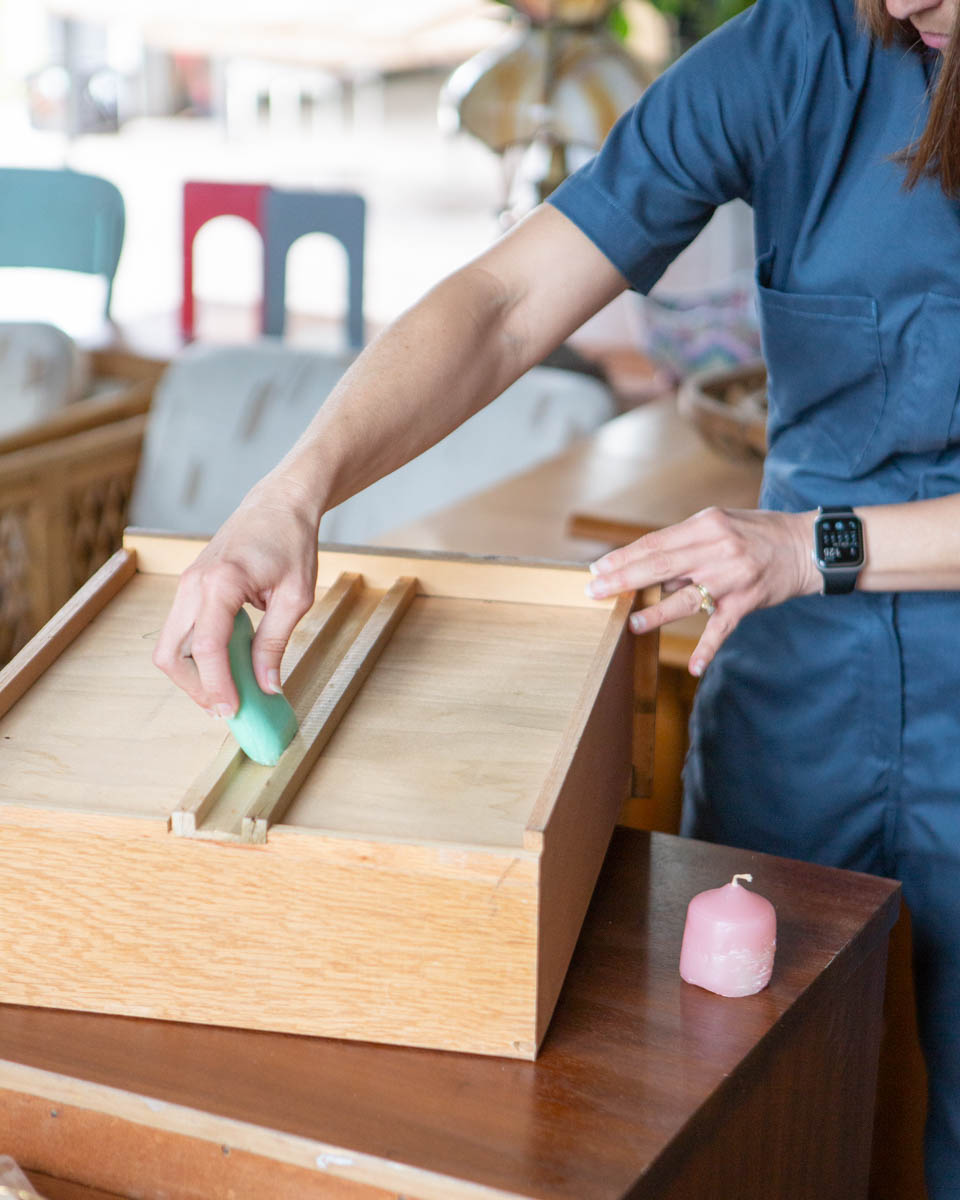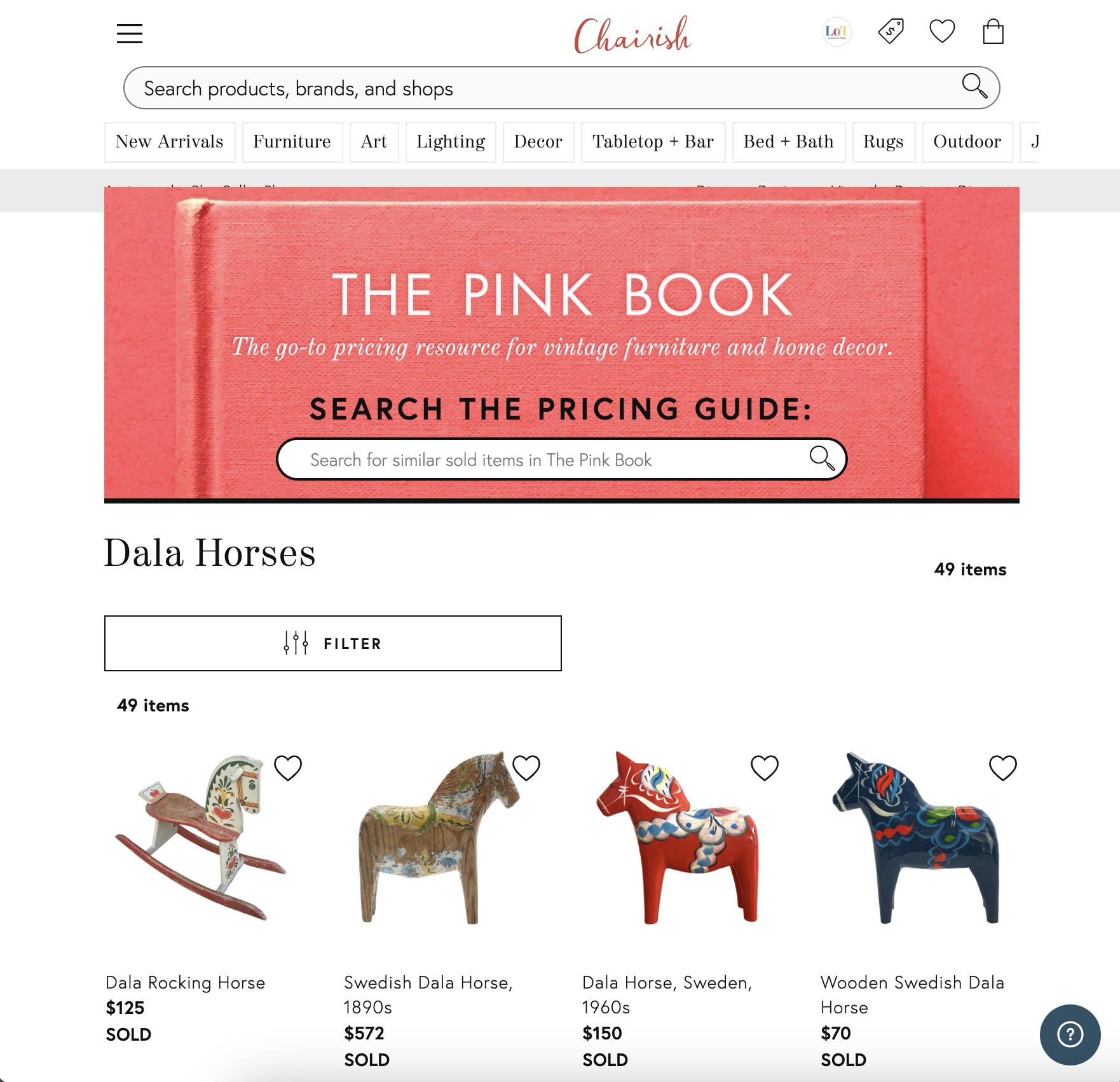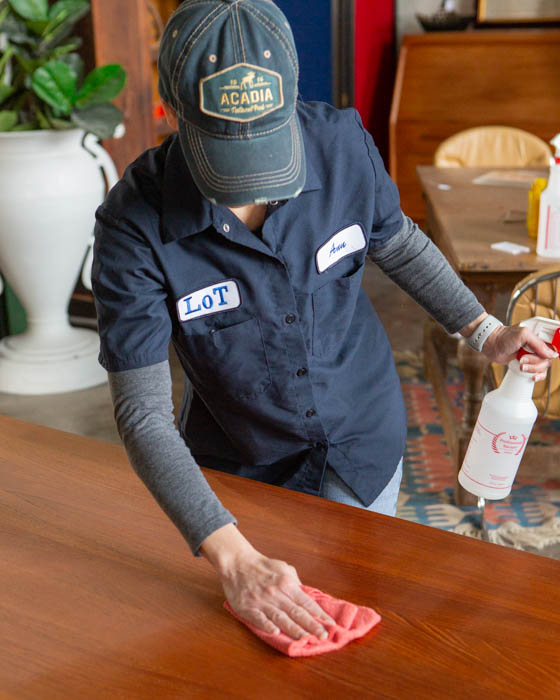Your cart is currently empty!
Determining the Value of Your Item
You have this really cute piece you want to sell. Let’s say it’s a red wooden Swedish Dala horse. How do you know what price to attach to it? These are our methods for researching the value of an item.
Local Pricing – Facebook Marketplace
Search for the item on Facebook Marketplace and include a maker or designer if you know. This will help in finding an exact match. A red wooden horse made by my kid is very different than one put out by the Swedes in the 1960’s. In the Marketplace results, scroll to the “Availability” filter and select “Sold”. This is important because people have freedom to list their piece at any price they want, but what a piece actually sells for is another story.
We like to think of the average sold price on Facebook as an ideal priced-to-move kind of amount. Folks search Marketplace to find good deals and sold prices will reflect that. From these recent results in our hometown of Columbus, Ohio, I see an average of about $30-$35 for one generic horse, but I also know mine is made by Nils Olsson, so I’d list mine at $100 based on these results:

Nationwide Pricing – Ebay
Want to look into a good value for your piece and what the US market might say about it? Hop onto Ebay, enter your item you’re hoping to sell (include any maker information like on Facebook to bring up exact matches).
Scroll down the page on the listing results until you find the filter “Show only” on the left side of the page. Select “Sold items” and then peruse the sold prices. Ebay has their sold prices in green, which makes it easier to scan. Get a feel for the average sold price and go from there.
Note the condition of pieces. If your piece is in exceptional condition and the sold prices you find are for cracked or damaged versions, you can expect to list yours for more. I’m seeing sold prices range from $127.50-$137.50 for my little horse, so I would list mine for a starting price of $140 and be willing to potentially negotiate from there:

Nationwide Pricing – Chairish Pinkbook
This way requires a Chairish account.
Chairish is an online shopping platform utilized by both individuals and businesses. The platform has a public link to their Pink Book, which reflects all sold pieces on their site. Using your same search methods including maker information, you can find matching sold items from the national market.
This site is known for its outrageous prices, but there’s a formula we use to help decipher target listing prices. As a basic seller, Chairish takes a 30% commission of the sold price. I account for that when researching the item I want to price. Let’s take our little Swedish dala horse again. If you were to scroll down the page, you’d see a range of sold prices from $65-$150. Taking into account the 30% Chairish fee, that would mean a take home of $45.50-$105. I would list my little horse at $110 initially.

Full disclosure, we don’t currently have a red wooden Swedish Dala horse in the shop (yet), but you bet I’ll be keeping my eye out for one!
The biggest take away is to make sure that no matter which platform your use or search, make sure you’re looking at sold prices because these are actual prices people have paid for items like yours.
This is a start. There are more nuances related to condition of your piece, demand, location, ideal timeframe for selling (do you have time to wait or do you need it gone yesterday?) and other factors. Do you have your own method for researching pricing? Or do you want help researching the price on a piece you have? Let us know in the comments or DM us on the socials!




